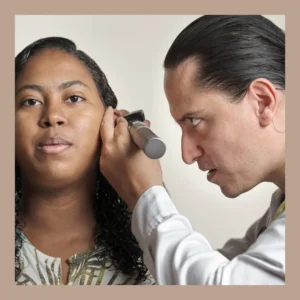Comprehensive Hearing Evaluation Services: Why They Matter
Understanding the Significance of Hearing Evaluations
Hearing evaluation services are crucial for maintaining and improving your auditory health. Regular evaluations detect issues early, prevent further damage, and enhance your quality of life. Here’s a detailed look at why these services are essential and what they entail.
The Advantages of Routine Hearing Evaluations
Regular hearing evaluations offer a range of benefits:
- Detect Hearing Loss Early: Identifying hearing loss allows immediate treatment, preserving your remaining hearing.
- Boost Cognitive Health: Early treatment of hearing loss helps prevent cognitive decline.
- Identify Health Issues: Hearing tests can uncover conditions like high blood pressure linked to hearing problems.
- Prevent Further Damage: Early intervention prevents long-term and irreversible hearing damage.
- Monitor Hearing Changes: Regular evaluations track changes in your hearing over time.
- Adjust to Life Changes: Modify hearing aids or implants to new environments and protect your hearing in noisy settings.
- Improve Emotional Well-being: Avoid the emotional impact of untreated hearing loss, such as frustration and loneliness.

What to Expect from Hearing Evaluation Services
Hearing evaluation services include several tests conducted by a qualified audiologist. Here’s a detailed breakdown:
- Consultation and Case History: Discuss your hearing concerns and medical history with the audiologist. This includes questions about noise exposure, medication use, and noticeable changes in your hearing.
- Otoscopy: The audiologist visually examines your outer ear and eardrum with an otoscope. This step helps identify potential causes of hearing loss, such as earwax buildup, infections, or physical abnormalities.
- Tympanometry: This test measures the function of your middle ear by assessing eardrum movement in response to air pressure changes. It can detect problems with the eardrum or middle ear bones.
- Audiometry: This is the core of a hearing evaluation. It measures your hearing thresholds across different frequencies. Pure-tone audiometry involves listening to beeps at various volumes and frequencies, indicating whether you can hear the sound and at what volume level. Speech audiometry assesses your ability to understand spoken words in quiet and noisy environments.
- Additional Tests: Depending on your initial test results, the audiologist might recommend further tests, such as Otoacoustic Emissions (OAE) to check inner ear hair cell health or Auditory Brainstem Response (ABR) to evaluate brainstem response to sound.
Understand more about speech in noise.
Differentiating Between Hearing Tests and Hearing Evaluations
Understanding the difference between a basic hearing test and a comprehensive hearing evaluation:
- Basic Hearing Test: This is a quick screening to identify potential hearing loss. It often involves pure-tone audiometry, listening to beeps at different volumes and frequencies. You can get hearing tests at doctor’s offices, schools, or even online. They provide a basic indication of potential hearing loss but don’t specify the type or severity.
- Comprehensive Hearing Evaluation: This is a detailed examination to diagnose hearing loss and determine its cause. It includes a consultation with an audiologist, otoscopy, tympanometry, and various audiometry tests. Audiologists typically conduct these evaluations in private practices, hospitals, or hearing clinics. They offer a detailed picture of your hearing health, including the type, severity, and potential cause of hearing loss. The audiologist will also discuss treatment options based on your individual needs.
Standard Hearing Tests in Evaluations
Several types of hearing tests help diagnose the type and severity of hearing loss:
- Pure-tone Testing: Identifies the quietest volume you can hear at each pitch. Both children and adults undergo this test.
- Bone Conduction Testing: Assesses issues with the tiny hair cells in your cochlea.
- Speech Testing: Involves listening to and repeating specific words. This test shows how well you understand speech.
- Auditory Brainstem Response (ABR): Checks the pathways between your inner ear and brain, often used for children and individuals who can’t complete pure-tone tests.
- Otoacoustic Emissions (OAE): Tests inner ear function, typically used for babies and young children.
- Tympanometry: Checks how well your eardrum moves, detecting issues like a ruptured eardrum, fluid in the middle ear, or earwax buildup.
Making Sense of Your Hearing Evaluation Results
Interpreting your hearing evaluation results is essential for understanding your hearing health. Here’s how to interpret your results and what steps to take next:
- Understanding Your Audiogram: The audiologist will explain your audiogram, which plots the softest sounds you can hear at different frequencies. Symbols on the graph will represent your hearing thresholds. It suggests hearing loss at those frequencies if they fall outside the normal range. The degree of hearing loss is categorized as mild, moderate, severe, or profound.
- Next Steps: Based on your results, the hearing care provider will recommend the appropriate course of action. This might include regular monitoring, hearing aids for mild to moderate hearing loss, or medical treatment for underlying conditions.

Choosing the Right Hearing Center for Your Needs
Selecting the right hearing center ensures accurate evaluations and effective treatment. At Stanford Hearing, we offer no-charge consultations and screenings to put your mind at ease. Our audiologists provide thorough assessments and personalized recommendations to improve your hearing.
Take the first step towards better hearing today. Contact Stanford Hearing to schedule your comprehensive hearing evaluation services.
